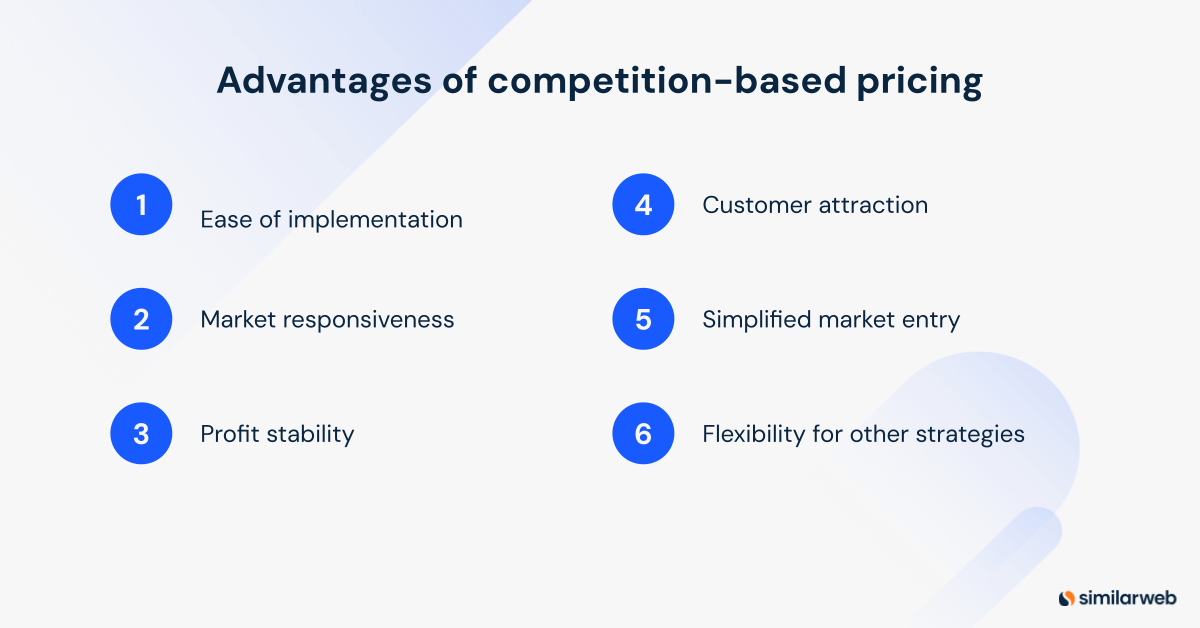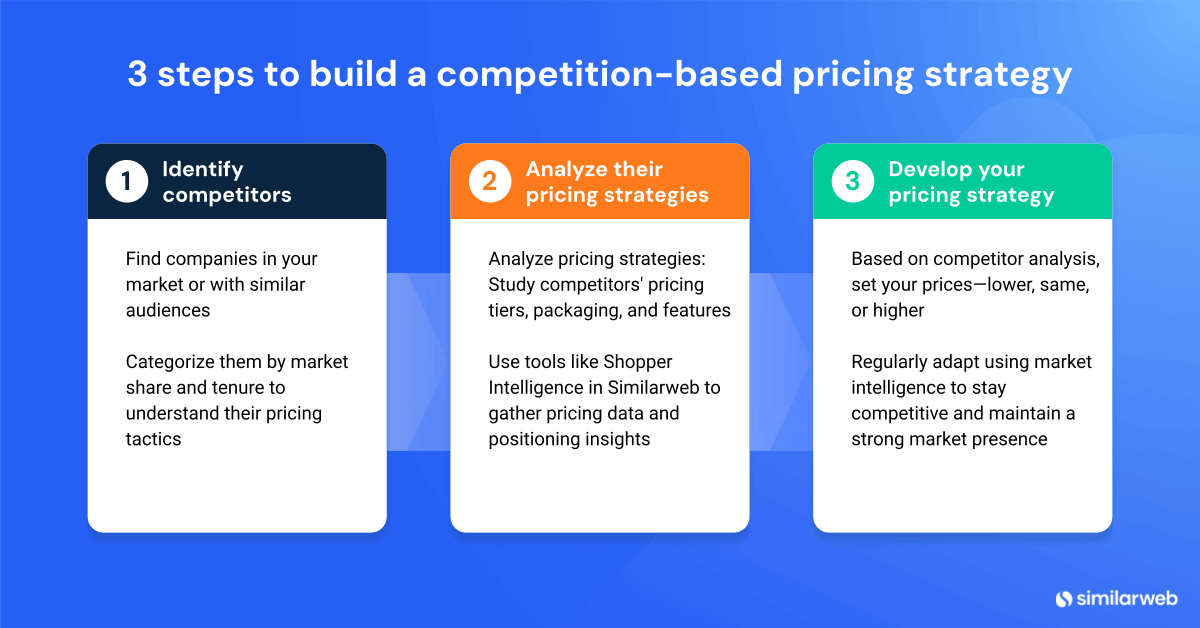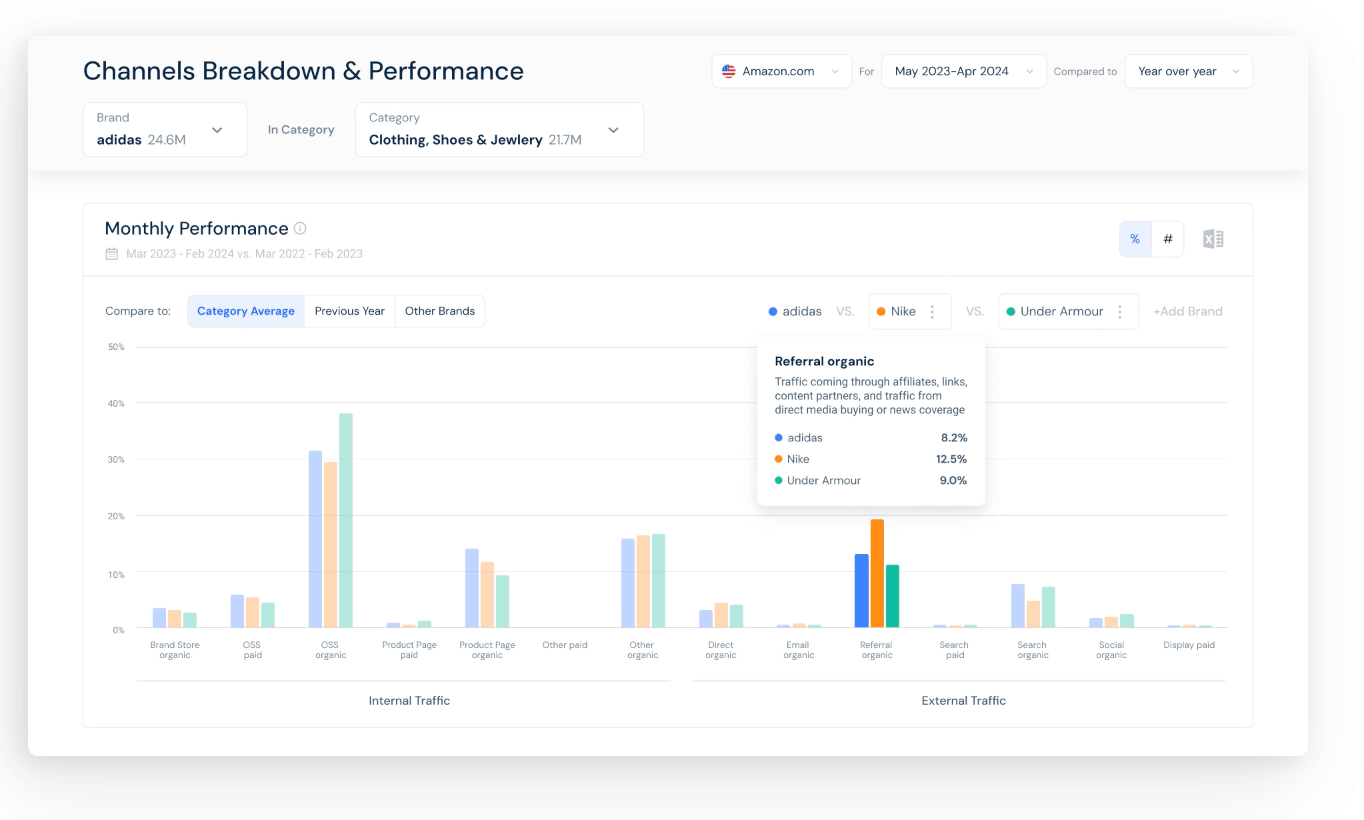 Marketing Intelligence
Marketing Intelligence
Competition-Based Pricing: Strategies, Benefits, and Drawbacks

Your pricing strategy can make or break your business. It’s a delicate balance: set prices too high and lose customers. Set them too low, and your profit margins tank.
Competition-based pricing offers a strategic solution. It can enable you to stay competitive and profitable.
It helps a business catch the attention of potential customers while reducing operational expenses. It is also particularly beneficial for retailers in a crowded and competitive market.
Here’s why it’s important to have a competitive pricing strategy.
A survey by Bright Data shows that 82% of consumers believe pricing is the most important factor when purchasing.
But all this involves more than just pricing. It’s about monitoring prices and constantly re-pricing them. Here, we’ll define competition-based pricing, its pros and cons, and how to implement it successfully.
What is competition-based pricing?
Competition-based pricing, often referred to as competitive pricing, is the strategy of setting prices based on what competitors charge.
A pricing strategy like value and cost-plus pricing starts with the business’s costs and uses them to select a price.
Competition-based pricing analyzes the competitive landscape to determine what peers are offering. Businesses that follow this pricing model attempt to be as close as possible to what others are charging so that they do not overprice themselves.
Advantages of competition-based pricing
Competition-based pricing becomes a very attractive model for businesses needing to keep up with the market. Here are some key advantages:
- Ease of implementation: This simplifies pricing decisions. A business just needs to track competitors’ prices to set its own. Businesses track competitors’ prices and adjust accordingly rather than conducting complex market research on customer preferences. For example, Costco uses this strategy to price against traditional retailers.
- Market responsiveness: Businesses can rapidly increase or decrease their prices when their competitors change prices. The rapid reaction to market changes allows businesses to stay up-to-date and maintain their competitiveness. Hotels change their rates almost daily based on competitor rates, events, or seasonality.
- Profit stability: Marking prices to match the market maintains flow and prevents sudden spikes or dips in revenue. It makes income more predictable and helps stabilize customer loyalty by setting predictable pricing schedules. This is why most grocery store chains use competitive pricing.
- Customer attraction: Highly competitive prices are key to attracting and retaining customers who compare before buying. If a group of companies compete with each other in an industry, the ones within the acceptable price range are more likely to attract and maintain customers.
- Simplified market entry: New entrants into the market can easily discern their ‘price zone’ just by observing competitor price strategies. This reduces the risk of overpricing or underpricing. It also helps in reducing entry barriers and helping new ventures penetrate the market without heavy pricing research. We often see tech start-ups introduce price cuts for new apps and get people hooked on their products. This is normal for a new firm entering the market.
- Flexibility for other strategies: By aligning with competitor prices, businesses can focus on differentiating themselves through non-price factors, such as product quality, features, or customer service, making pricing just one part of their overall strategy.
Disadvantages of competition-based pricing
Competition-based pricing has several advantages. But it also comes with a few drawbacks. It’s essential to understand these weaknesses before building out your strategy.
- Consumer demand is ignored: Competitive pricing doesn’t always reflect actual demand. Businesses may miss out on opportunities to profit. This is because they are too focused on competitor prices rather than understanding what their unique customer base is willing to pay.
- Risk of price wars: An aggressive pricing strategy can quickly start a price war – with prices plummeting to unsustainable levels for both parties. The fast-fashion category is a good example. Some brands erode their brand equity when they frequently engage in discounting wars.
- Complacency: Companies might be tempted to take a passive approach. Here, they simply match the market and competitors’ prices instead of innovating and adding value. While keeping tabs on rival strategies can be useful for learning from competitors, over-reliance on them can lead to a lack of innovation and differentiation. The result? A homogenous market and reduced competitive advantage.
- Limited application for unique products: Products with high differentiation or features cannot take advantage of competitive pricing. They use value or cost pricing because they have a unique brand value. In the luxury goods markets, high-end watches or designer clothing use value-based, rather than competition-based, pricing.
- Overreliance: Emulating competitor prices assumes they have set their pricing optimally, which isn’t always the case. For example, let’s say your restaurant is competing against similar ones at the same price level. You may fall into the trap of price matching without investigating your competitors’ operating costs or sourcing strategies. You might be matching prices with a restaurant that can maintain slimmer margins than you.
How to build a competition-based pricing strategy
To design a result-oriented, competition-based pricing strategy, a business needs to follow certain rules or steps:
1. Identify your competitors:
The first step is to identify your current competitors. Search for other firms that operate in the same geographical markets or serve a similar target audience. Categorize them based on their market share and tenure. It helps to define different types of competitors so you understand the pricing tactics they use.
2. Analyze their pricing strategies:
Research how your competitors set their prices. Consider factors such as pricing tiers, packaging, and the features they offer. Use competitive analysis tools to capture pricing data and content analysis to understand how competitors position themselves.
The Shopper Intelligence tool, within the Similarweb platform, provides insights about your competitors’ performance and pricing strategies. It will also enable you to build a winning competition-based pricing strategy.
3. Develop your strategy with competitor pricing:
Once you understand your competitors’ pricing, set your policy accordingly—whether to price lower, the same, or higher. Use competitive benchmarking and marketplace intelligence to adapt to market changes and add a unique value proposition to your offer.
This sequential approach to building a competition-oriented pricing strategy allows organizations to stay competitive and reactively revise their strategy to adapt to market changes.
Companies can establish a strong market reputation through detailed competitor analysis and responsive actions, gain the most profit while providing a good customer experience. Ongoing market and competitor monitoring is necessary to recognize market shifts and respond appropriately.
Gain deep competitive pricing insights and stay ahead
Competitive pricing allows businesses to position themselves strategically in the market, reacting quickly to competitor actions.
Combine this with the right Competitive Analysis tool like Similarweb, and you’ll be sure to stay ahead of the game. From understanding consumer behavior to utilizing your competitors’ pricing strategies, Similarweb’s Shopper Intelligence provides detailed insights into your online shopping moves and how they compare to the broader market.
Stay ahead and monitor your pricing strategy relative to the market and your customers’ needs. With Similarweb, you can get the insights you need to improve and dominate your market.
With the right insights, your next online growth opportunity is just a click away.
FAQs
How does competition-based pricing impact profit margins?
Competitive pricing can maintain or reduce margins depending on how it’s managed. For example, if the company adopts a discounted price-matching or undercutting strategy, it could considerably reduce margins. Conversely, if the company focuses on premium pricing due to the scarcity of price-sensitive customers, it can sustain or even increase its margin.
What are common industries that use competition-based pricing?
This strategy is commonly used by industries with little product differentiation, such as retail, consumer electronics, and e-commerce, to stay ahead of other firms and appeal to price-sensitive consumers.
How can small businesses effectively use competition-based pricing?
It can work for small businesses by monitoring local competitors closely so that prices are set in line with expected market levels while taking costs into account in order to remain profitable.
What tools can help implement competition-based pricing?
For assessing and monitoring competitive pricing, a range of competitive analysis tools, such as Similarweb and pricing software, can be utilized to obtain and analyze competitors’ pricing dynamics, thereby adjusting firms’ pricing levels dynamically to enhance competitiveness.
How does competition-based pricing differ from other pricing strategies?
Cost-plus and value-based pricing start with internal costs or perceived customer value calculations. In contrast, competition-based pricing is closely tied to the external market prices determined by competition – hence the name.
Your full marketing toolkit for a winning strategy
The ultimate solution to help you build the best digital strategy











